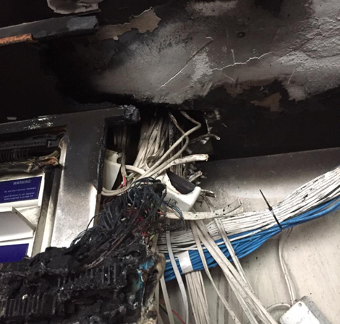
Background
The claim involves a real estate agency business that suffered a Business Interruption Loss due to a fire that occurred in the same shopping centre in which their offices were located.
The fire destroyed the anchor tenant being a large supermarket. The repairs to the shopping centre took well in excess of 12 months to complete. The Insured continued to operate their business from the shopping centre as their premises was largely unaffected by direct fire damage.
Due to the fire, there was a significant decrease in foot traffic at the centre. Many of the other small tenants had also closed their doors.
The Insured had cover for prevention of access under their Business Interruption Policy which extended to cover their business for loss of income due to damage to other property in the same complex.
YourClaim was only appointed some 3 years after the fire as the Insurer was resisting the Insured’s claim due to lack of support for an actual loss suffered. The matter was at a stalemate and had been sitting dormant for months.
The Insured’s broker recommended that the Insured appoint our office to assist with the claim to determine if a supported loss could be presented to the Insurer. The Insured accordingly appointed YourClaim to assist them, and they had cover for claims preparation costs under their policy to assist them in this regard.
We established that the Insurer compared the Insured’s financial results in the 12-months prior to the loss to that achieved in the 12-months post loss. Such comparison revealed that no loss had been suffered by the Insured.
The Insured was adamant that they had indeed suffered a loss of income however they were simply at a loss as to how they could demonstrate same.
The Claim
Our office initially reviewed the Insured’s financial results for the 12-months prior and post the loss to appreciate the Insurer’s initial resistance of the claim.
We then performed a more thorough analysis of these business results and identified a number of anomalies within the monthly results of these 12 month periods that were discussed further with the Insured.
We established that there were a number of factors that needed to be taken into consideration when comparing the sales results pre and post loss.
- We established that the Insured had employed additional selling agents during the interruption period that were selling houses in newer established suburbs.
- We also identified that there was a significant change in the partnership arrangement between the owners of the real estate business prior to the loss.
The above information was crucial to determining whether a loss had been suffered. Clearly the business results 12 months pre and post loss was not an “apples for apples” comparison.
We obtained additional information from the Insured so that we could apply the appropriate adjustments to the pre and post loss revenue of the business.
In doing so, our calculations identified a loss of income suffered by the Insured over the 12 month interruption period that totalled six figures.
Following various discussions and meetings with the loss adjuster, the claim was eventually agreed at the full value submitted by our office and the claim was settled by the Insurer.
Takeaway Points
- Never assume that a loss of revenue has not been suffered when comparing pre loss revenue and post loss revenue.
- Partial losses are often more difficult to identify and require a deeper analysis of financial results.
- One often has to identify anomalies in the financial results and ask the right questions in order to identify factors that might influence the loss of income calculation.


